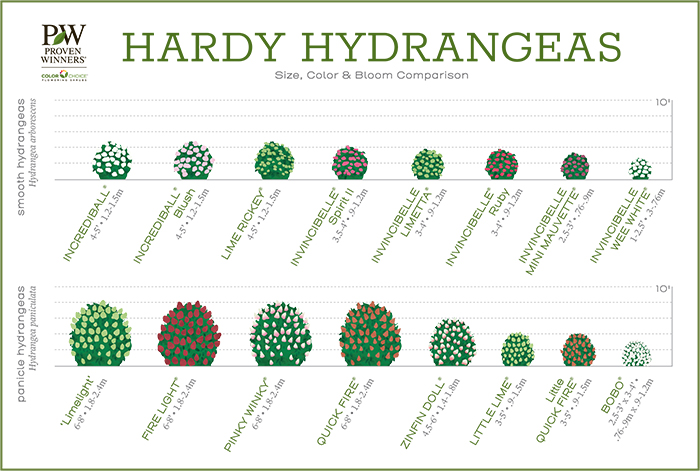6 Types of Hydrangeas Demystified
Hydrangeas are beautiful flowering shrubs that can be grown in gardens across the country. They make great foundation plants, border shrubs or potted flowers. There are many different hydrangeas in a variety of colors, sizes and hardiness levels.
Types of hydrangea bushes
There are six main types of hydrangeas commonly grown in North American gardens:
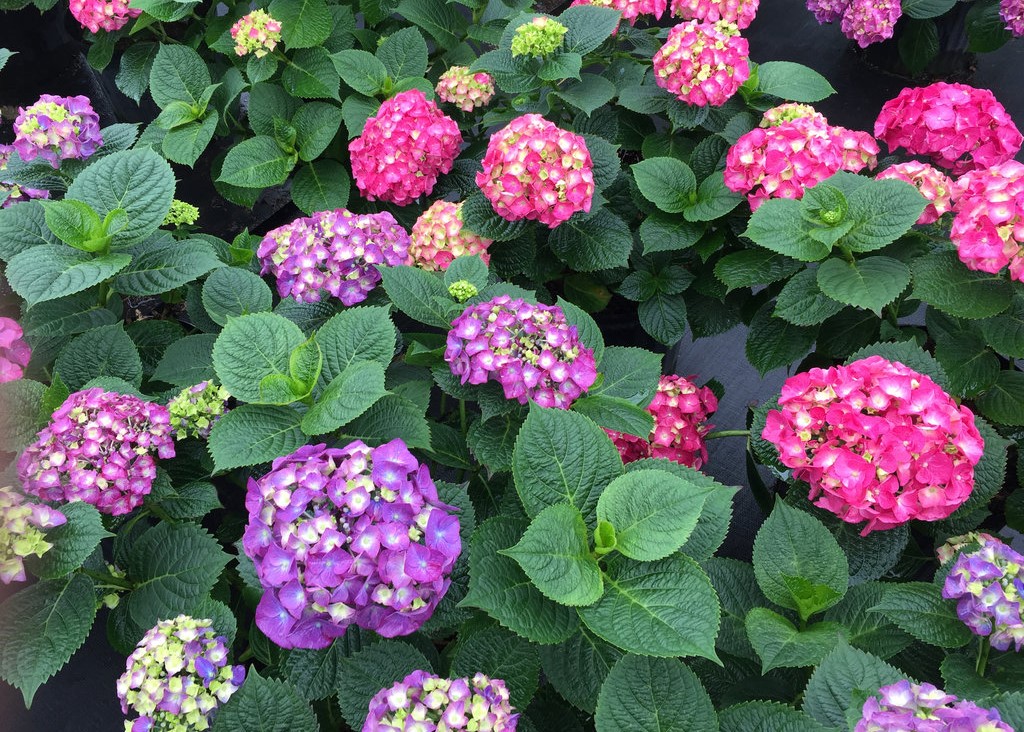 LET'S DANCE® Big Band |
BOBO® |
Climbing |
|
|
What are the differences?
It is the ways in which these six types differ that make them confusing.
Do they bloom on old wood, new wood or both?
The trickiest thing about hydrangeas is that different types have different flowering shrub habits:
Panicle and smooth hydrangeas flower on new wood (growth created in the current season). Flower buds form after the plant leafs out in spring, and open a few months later in summer. As a result, these plants flower reliably each year, no matter how cold the winter was. Understanding which type you have is essential for proper hydrangea care.
Bigleaf, mountain, oakleaf, and climbing hydrangeas flower on old wood (growth created in the previous season). Flower buds begin to form in late summer and must remain undisturbed all through the fall, winter, spring, in order to flower the following summer.
As a result, these plants will not flower if:
- They are pruned. Pruning at any time will remove potential flower buds.
- They are browsed by deer, which will eat the flower buds.
- They are damaged by weather. Winter weather isn’t actually the problem; rather, it is in spring, when several days of warm temperatures are followed by a sudden freeze, that flower buds are most likely to be damaged.
Reblooming hydrangeas, also known as remontant hydrangeas, are types of big leaf and mountain hydrangeas that have the unique ability to flower on both old and new wood. Even if the buds are damaged in winter weather, the plant can still flower on wood it produces that season. Reblooming varieties include the Let’s Dance series, and Tuff Stuff. This makes hydrangea care more flexible for gardeners in colder climates.
Related: 10 Best Hydrangea Varieites
Color
All types of hydrangeas undergo some color change as their flowers age, but only big-leaf and mountain hydrangeas can change their color in a predictable, controllable way. It is not the soil pH that is responsible for this change – it is actually the presence of aluminum in the soil that does it.
- Certain bigleaf varieties cannot experience color change – generally speaking, the more intense the color, the less likely it can change. Similarly, white varieties of big-leaf hydrangea will not change color.
- It is easier to change a hydrangea from pink to blue than from blue to pink, but both endeavors involve making chemical applications in specific amounts at specific times. A soil test is necessary to determine the best course of action. If you decide to try to change the flower color, shop for products carefully and read all directions.
- Pennies or nails in the soil will not change the flower color!
Learn more about how to turn hydrangeas blue.
Pruning
- Avoid pruning reblooming hydrangeas and those that flower on old wood, altogether. Instead, site them appropriately so they do not need to be pruned, and choose varieties that do not get too big for their space.
- New-wood flowering hydrangeas can be pruned each early spring, just as the new growth begins to emerge. Remove up to one-third of the height each year if desired to encourage vigorous new growth and strong stems to support the flowering shrubs.
- Hydrangeas do not strictly require regular pruning. They will grow and flower well with nothing more than removal of spent flowers and any dead wood each early spring.
Related: How to Prune Hydrangeas
Why isn't my hydrangea blooming?

Download this handy PDF of all the information here:
Why Isn't My Hydrangea Blooming? & Hydrangea Demystified Download PDF (English)
Why Isn't My Hydrangea Blooming? & Hydrangea Demystified Download PDF (French)
Care tips for success
They like moist but well-drained soil (hydrangeas will not tolerate wet feet – ever!)
They need some sun each day. Most people think of hydrangeas as shade plants, but they look and flower best with at least 4 hours of morning sun. Panicle hydrangeas are the most sun tolerant, and can take full sun in northern climates.
Provide plenty of water, especially as they are getting established. These flowering shrubs have shallow roots, so they dry out quickly. A 2-3” thick layer of shredded bark mulch is a useful addition to your planting.
- For unbelievable beauty anywhere you want it, pop a hydrangea in a pot and put it where you need it to go! Learn more about how to grow hydrangeas in pots.
Fun facts
A hydrangea flower consists of two different types of florets: the showy, papery flowers are known as sterile florets and serve only to attract pollinators; the tiny fertile florets are where pollination and seed-set take place. Mophead hydrangeas are comprised mostly of sterile florets; lacecaps mostly of fertile florets.
There are about 49 species of hydrangeas. Four species are native to North America, including smooth hydrangea and oakleaf hydrangea.
Big-leaf hydrangeas and mountain hydrangeas are closely related and native to the same region of Japan, but mountain hydrangeas have better bud hardiness because they occur in the mountains where conditions are harsher.



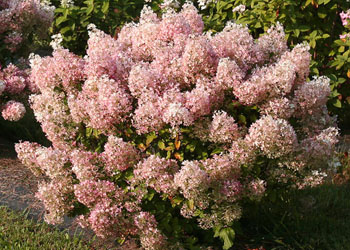
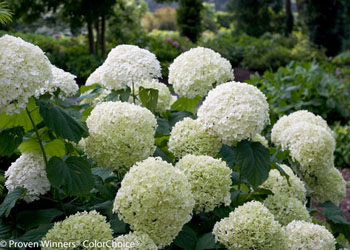

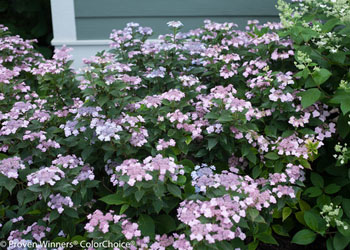
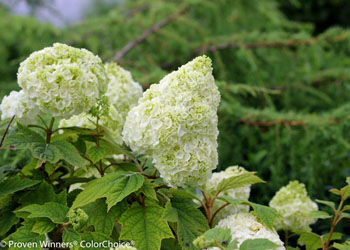 GATSBY MOON®
GATSBY MOON® 